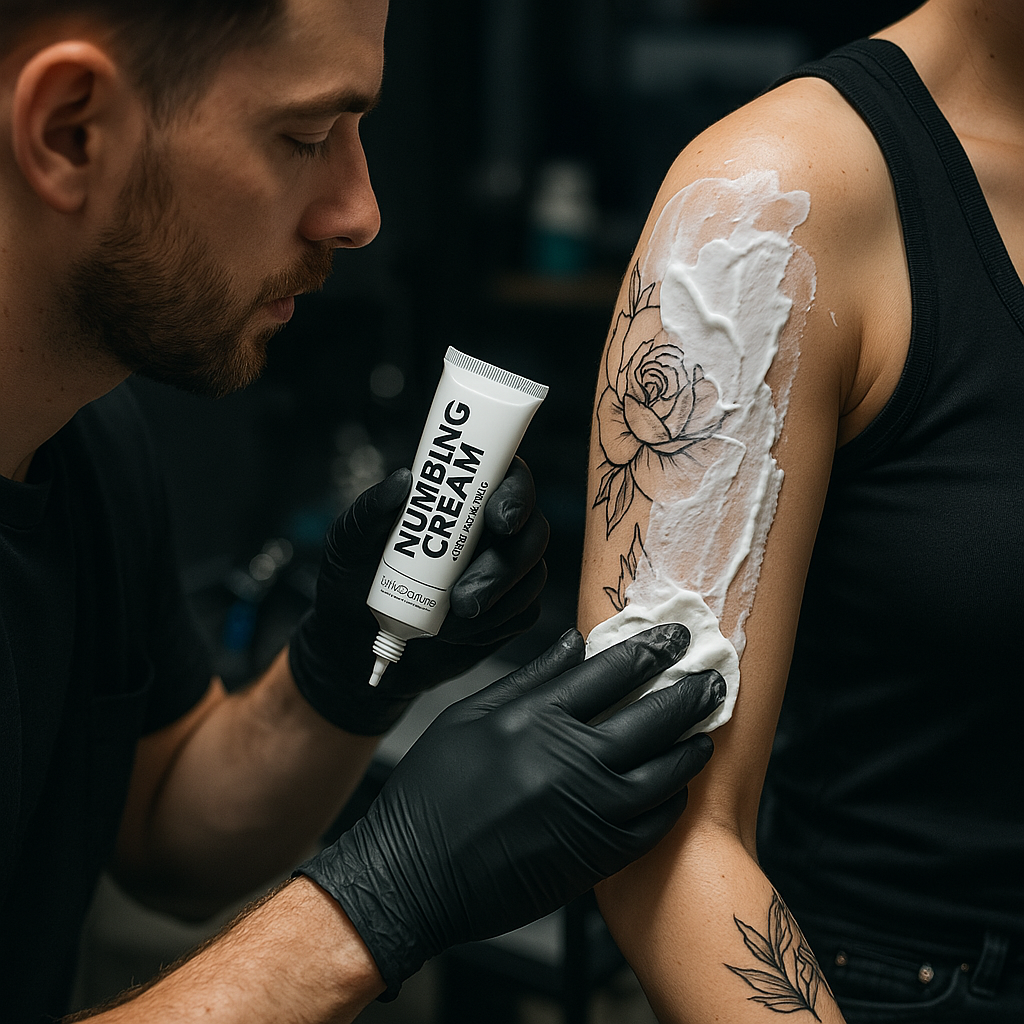Getting a tattoo is an exhilarating but usually painful experience. Whether you’re a first-timer or a seasoned tattoo collector, you may wonder: is there a way to make the pain less hurtful without sacrificing the outcome? Yes, and that’s where tattoo numbing creams step in.
Tattoo numbing creams are topical anesthetics specifically formulated to temporarily desensitize the skin. By numbing the pain receptors on the surface of the skin, the creams can render the entire tattooing experience more comfortable, particularly for long or sensitive sessions. This guide takes you through everything you need to know in 2025 to use them successfully.
How Do Tattoo Numbing Creams Actually Work?

Tattoo numbing creams work by blocking nerve signals in your body. Most of them use active ingredients like lidocaine or prilocaine to temporarily dull the pain sensation. Here’s a simplified process of how they function:
What happens after application?
Step 1: Absorption – After applying the cream, it penetrates the upper layers of the skin.
Step 2: Nerve Block – Active ingredients such as lidocaine block sodium channels, thereby inhibiting the nerves from transmitting pain signals.
Step 3: Onset and Effect – The majority of creams take approximately 30 to 60 minutes to become fully active, bringing relief for 2 to 4 hours.
It is necessary to use according to the package instructions or as instructed by a professional to prevent skin irritation or lack of effectiveness.
What Are the Different Types of Tattoo Numbing Creams Available?
Not all numbing creams are created equal. Choosing the right one depends on your skin type, the size of the tattoo, and the length of the session.
What are the three basic types?
- Nerve Blockers – Have lidocaine and are the most prevalent.
- Nerve Deadners – Have benzocaine or tetracaine; more potent but greater potential for side effects.
- Vasoconstrictors – Add epinephrine to minimize bleeding and swelling as well as numbing.
All have advantages and disadvantages, but nerve blockers tend to be used most often because of their balance of efficacy and safety.
When and How Should You Use Numbing Cream During a Tattoo Session?
Application is crucial to obtaining maximum comfort and safety.
What’s the ideal way to apply it?
- Prep the skin – Clean the skin completely to take oils and dirt off.
- Use a thick coat – Don’t rub it in. Just smooth it out.
- Wrap in plastic wrap – Traps heat and stimulates the cream.
- Wait 30-60 minutes – The longer you wait (within time guidelines), the better it works.
- Remove the wrap before you tattoo – Wipe clean and you’re ready to go.
Don’t apply it to broken or irritated skin, and don’t use more than recommended.
Are There Any Side Effects or Risks of Using Tattoo Numbing Creams?
As with any skin product, numbing creams can cause side effects when abused.
What to be wary of?
- Redness or swelling
- Itching or burning
- Allergic reactions
- Transient whitening of the skin
In order to avoid risks:
- Perform a patch test 24 hours prior to your visit.
- Only use accepted products.
- Do not overlap applications.
Stop using if there is severe discomfort and seek advice from a medical professional.
Can Tattoo Numbing Cream Affect the Tattoo Outcome?
Numerous clients and even some artists fear that numbing creams may alter the tattoo design or ink placement.
What’s the reality?
Used properly:
- They don’t affect ink retention.
- They don’t change skin texture long-term.
- They don’t disturb healing.
But excessive use or improper application may lead to extreme swelling, which could temporarily impact accuracy. Opt for skilled artists who are aware of numbing creams to prevent this.
Is There a Difference Between Over-the-Counter and Professional-Grade Creams?
Yes. OTC creams are more readily obtainable but frequently less powerful.
What’s the principal difference?
- OTC Creams: Relatively low concentrations of active elements (generally 4% lidocaine).
- Professional-Grade Creams: Greater strength, longer duration of action, sometimes prescription-only or supplied by authorized professionals.
- For huge or extremely sensitive tattoos, professional-grade supplies are advised. However, for small pieces, OTC products might be adequate.
What Do You Do After a Tattoo if You Had a Numbing Cream?
Aftercare is equally vital, even if you used a numbing cream.
What are Important Steps?
- Clean the area gently
- Use a mild ointment
- Steer clear of direct sunlight
- Keep it moisturized
- Monitor for signs of infection
Using numbing cream doesn’t release you from aftercare duties. Be strict with your tattoo artist’s recommendations.
Which Situations Are Ideal for Numbing Cream Application?
Not all tattoos require numbing cream. But in certain situations, it can be a difference maker.
When should you definitely consider it?
- Large, time-consuming tattoos
- Tattoos on sensitive areas (ribs, feet, inner arms)
- First-time tattoos
- Clients with low pain thresholds
- Cosmetic tattoos (lips, brows)
If your tattoo belongs to any of these categories, numbing cream might make the experience less painful.
How to Choose the Right Tattoo Numbing Cream in 2025?
The numbing products market is on the rise, but how do you know which one to choose?
What should you look for?
- Check the ingredients – Lidocaine (5%) is usually a good thing.
- Read reviews – Find out what actual users say.
- Look for lab-tested products – Particularly if you have sensitive skin.
- Talk to your artist – They might have tried-and-true tips.
What Alternatives Are There to Numbing Cream?
If you are hesitant about creams, there are other ways to deal with tattoo pain.What are the alternatives?
- Numbing sprays – Simpler to use during the session.
- Distraction methods – Music, breathing exercises, fidget devices.
- Topical cooling gels – Helpful after the tattoo to calm the skin.